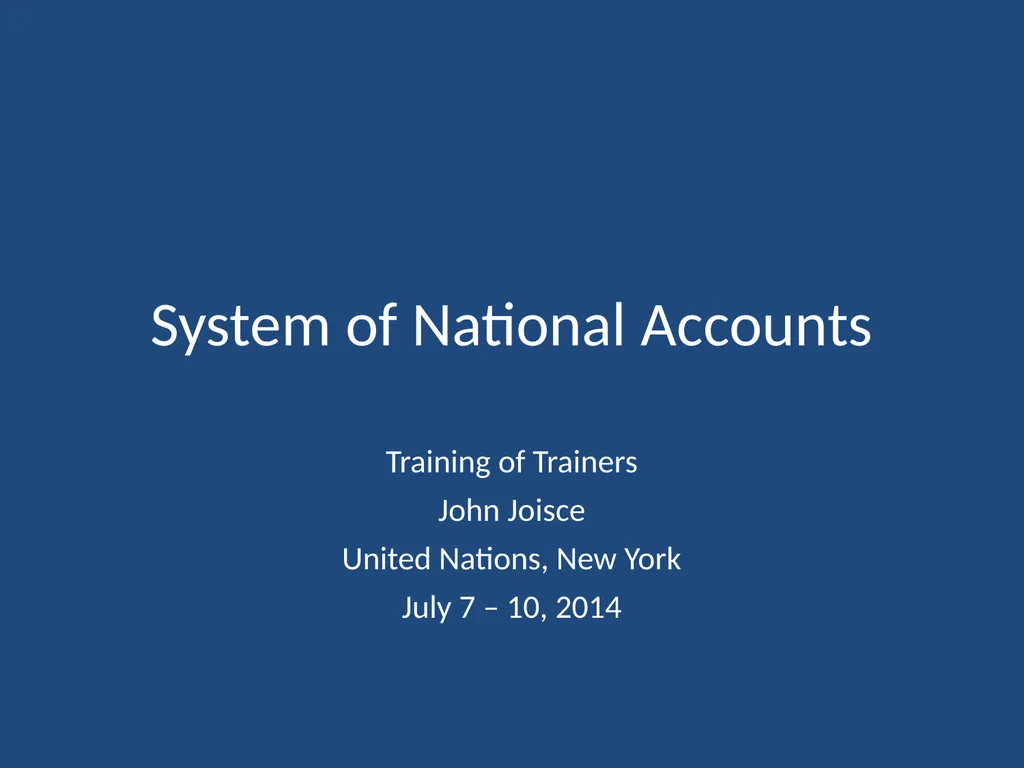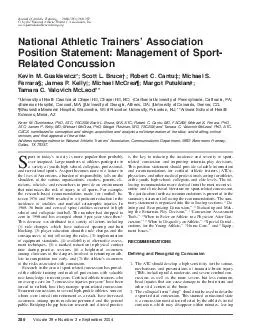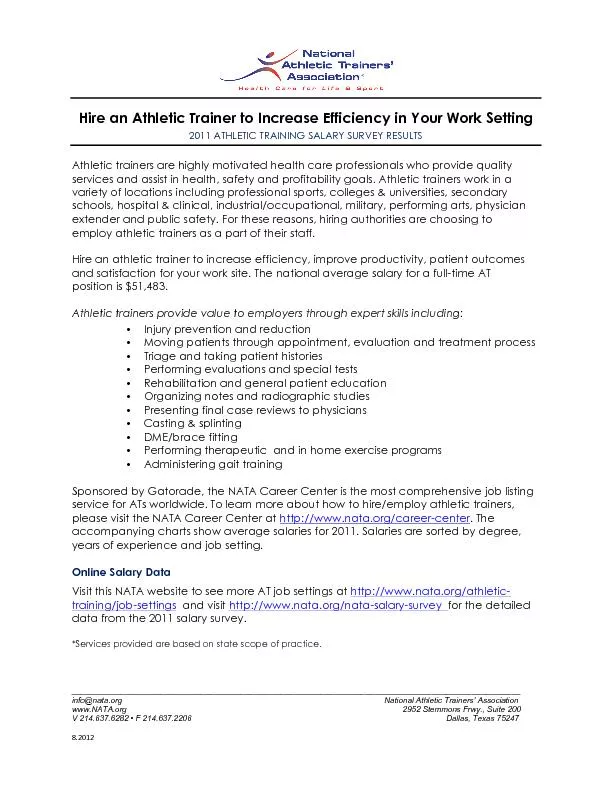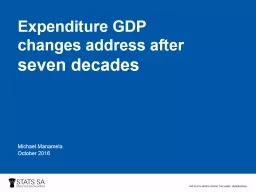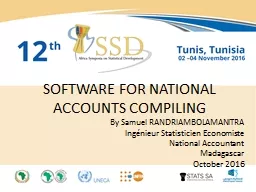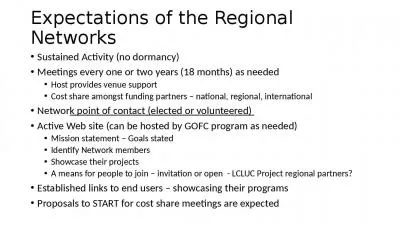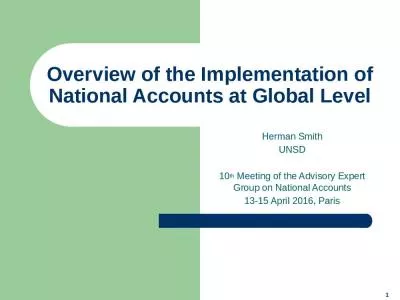System of National Accounts Training of Trainers
Author : test | Published Date : 2025-06-23
Description: System of National Accounts Training of Trainers John Joisce United Nations New York July 7 10 2014 Background Origins date back to 17th century focus was on ability of governments to wage war 20th century 1930s depression and WW2
Presentation Embed Code
Download Presentation
Download
Presentation The PPT/PDF document
"System of National Accounts Training of Trainers" is the property of its rightful owner.
Permission is granted to download and print the materials on this website for personal, non-commercial use only,
and to display it on your personal computer provided you do not modify the materials and that you retain all
copyright notices contained in the materials. By downloading content from our website, you accept the terms of
this agreement.
Transcript:System of National Accounts Training of Trainers:
System of National Accounts Training of Trainers John Joisce United Nations, New York July 7 – 10, 2014 Background Origins date back to 17th century: focus was on ability of governments to wage war 20th century: 1930s depression and WW2 Keynes, Kuznets, Stone et al 1953 SNA: rudimentary by present standards 1968 SNA (GDP, not GNP) Focus on flows: ”volume” measures, production, consumption, savings and investment 1993 SNA: complete set of accounts, covering balance sheets (including NPNF Assets) 2008 SNA: update of 1993 SNA Economic underpinnings Between 1953 SNA and 2008 SNA much changed but one thing remained more or less constant: production boundary Focus on market and market-oriented activity Valuations: market prices Not welfare measure (though often used as one) (Most) activity within household for own consumption excluded Economic underpinnings SNA policy oriented from beginning : 1930s Depression: governments largely ineffectual and operating in a vacuum: belief system would rectify itself (market always in equilibrium) No framework for analysis Need to measure what can be affected by policy and build models from data within theoretical framework (interest rates, fiscal measures (increase in gov’t spending, increase in taxes, devaluation, etc.) Residence and institutional units Residence essential building block for inclusion in national accounts of any given economy Institutional unit: Must be resident in only one economy For twelve months or intention to be resident for twelve months Corporations resident where registered or legal domicile (branches) Able to acquire assets, incur liabilities in own right Comparison with Business Accounting Business account: Income and expenditure statement Statement of retained earnings Capital accumulation account Cash flow statement (Statement of Changes in Financial Position) Balance sheets Focus on impact on shareholders’ wealth, how funds have been employed and whether utilized effectively and as efficiently Sequencing of accounts in SNA Production Account Generation of Income Account Allocation of Primary Income Account Secondary Distribution of Income Account Use of Income Account Capital Account Financial Account Other Changes in Assets Account Balance Sheet Sequencing of accounts in SNA (cont) Each with balancing item of analytical value All by sector General Government, Nonfinancial Corporations, Financial Corporations, Households, Non-Profit Institutions Serving Households, Rest of World Production Account An activity, carried out under the responsibility, control and management of an institutional unit, that uses inputs or labour, capital, and goods and services to produce output of goods and services. Balancing item(s): Gross Output less Intermediate Consumption equals Gross Value Added
